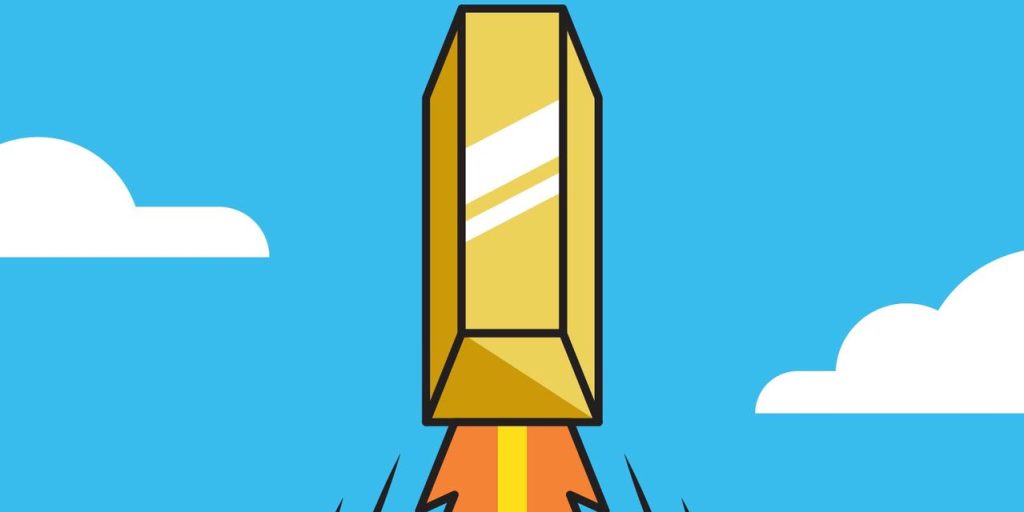Gold prices are hot. At $2,023.70 an ounce—up 2.8% this past week—gold has about 2% to rise to hit its record high of $2,069.40, set in 2020. The yellow metal has gained 11% over the past month, and 24% from its recent November low, to flirt with the record.
Gold prices are typically driven by three factors. Gold is worth more in dollars when the greenback falls in value. Lower bond yields mean less competition for gold, which produces no income. And greater risk aversion makes gold more popular. Bond yields collapsed in March—the two-year U.S. Treasury note yield was at 3.8% on Tuesday, down from 5.1% at its early March peak. And bond yields abroad have held up better, weighing on the dollar.
The moves reflect expectations of an end to the Federal Reserve’s interest-rate hikes and concerns about recession amid banking turmoil. A looming debt-ceiling fight adds to the jitters. Breaking $2,000 was a significant psychological barrier. Gold’s next move will depend on how rate expectations and the economy evolve. But with bond yields, the dollar, and sentiment working in its favor, gold has room to run.
A gold surge is also bullish for gold-miner shares.
Newmont
rallied some 20% over the past month, and the
VanEck Gold Miners
exchange-traded fund is up 28%. Gold-mining stocks tend to be more volatile than the underlying commodity. It doesn’t cost more to mine an ounce of gold whether its price is $1,500 or $2,000, and the difference falls to the bottom line.
Over the past few years, miners have cited higher prices for labor, diesel, and raw materials. If gold prices continue to rise, expect the stocks to lead the way.
Next Week
Tuesday 4/11
Albertsons
and
CarMax
report quarterly results
Moderna
hosts a virtual investor conference to discuss its vaccine development.
The National Federation of Independent Business releases its Small Business Optimism Index for March. The consensus estimate is for a 89.9 reading, about one point lower than in February. The index remains well below historical averages as small-business owners struggle with labor shortages. In February, 47% of owners reported job openings that were hard to fill, a very high level.
Wednesday 4/12
ConocoPhillips
holds its 2023 analyst and investor meeting.
The Federal Open Market Committee releases the minutes from its late-March monetary-policy meeting.
The Bank of Canada announces its monetary-policy decision. The central bank is expected to keep short-term interest rates unchanged at 4.5%. The BOC has raised rates by 4.25 percentage points since last March, and traders are now betting that the terminal, or peak, rate for this hiking cycle is already in.
The Bureau of Labor Statistics releases the consumer price index for March. Expectations are for the CPI to be up 5.2%, year over year, after increasing 6% in February. The core CPI, which excludes volatile food and energy prices, is seen edging up to 5.6%, from 5.5%. The FOMC has stressed that it is particularly important to see moderation in core services inflation, excluding housing, which rose 6.1% in February.
Thursday 4/13
Delta Air Lines
and
Fastenal
hold conference calls to discuss their earnings.
The BLS releases the producer price index for March. Economists forecast that the PPI will increase 3.1% from its level a year earlier, while the core PPI will be up by 4.3%. This compares with gains of 4.6% and 4.4%, respectively, in February. A 3.1% rise would be the lowest since February 2021.
Friday 4/14
First-quarter earnings season begins in earnest with
Citigroup,
JPMorgan Chase,
and
Wells Fargo
all reporting results before the market opens. Banks’ balance sheets and bond portfolios will go under the microscope, following the Sturm und Drang of the past month.
BlackRock,
PNC Financial Services Group,
and
UnitedHealth Group
announce quarterly results.
The Census Bureau reports retail sales data for March. The consensus call is for consumer spending to decline 0.3%, month over month, to $696 billion. Excluding autos, retail sales are expected to fall 0.2%, compared with a 0.1% decrease in February.
The University of Michigan releases its consumer sentiment index for April. Economists forecast a 64 reading, two points more than in March, but a historically low figure. In March, consumers’ expectations of the year-ahead inflation was 3.6%, the lowest level since April 2021.
Write to Nicholas Jasinski at nicholas.jasinski@barrons.com
Read the full article here




